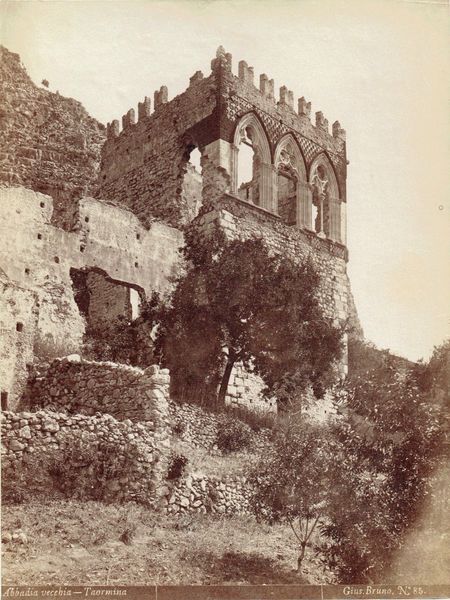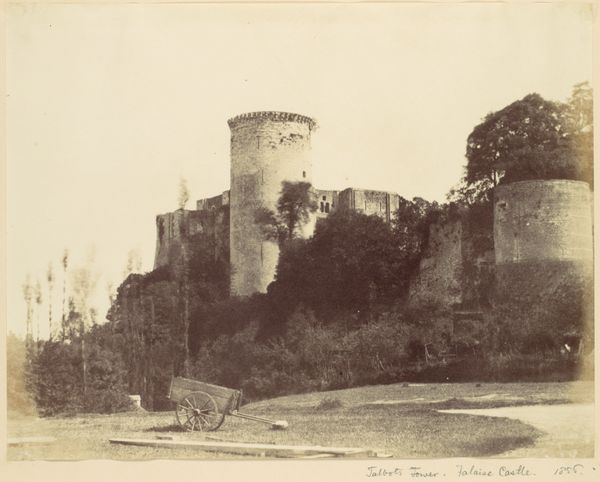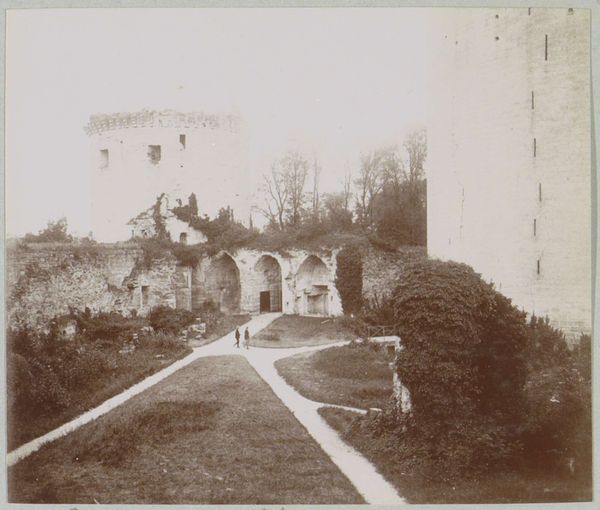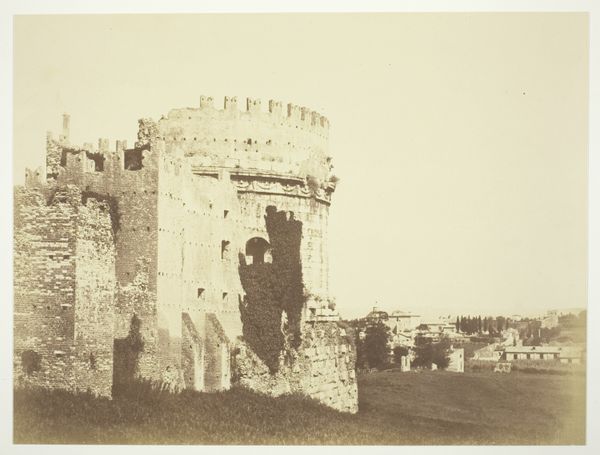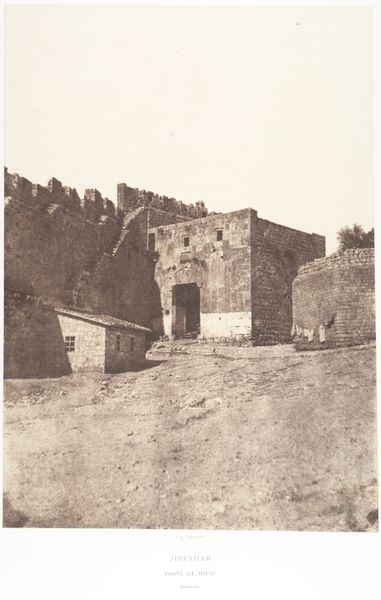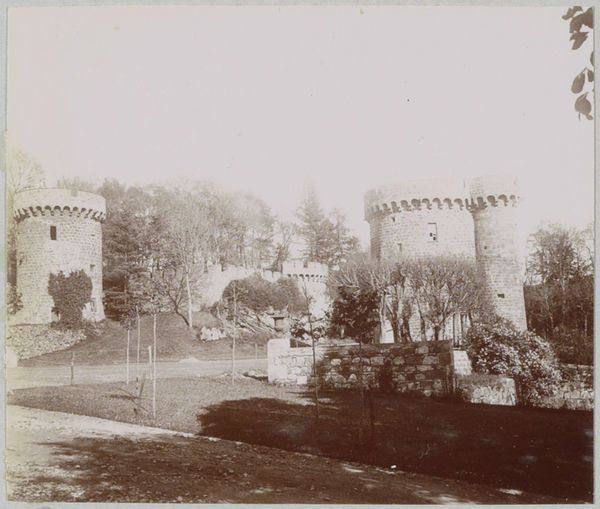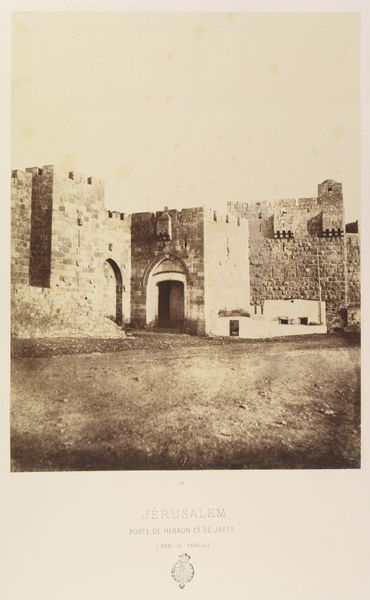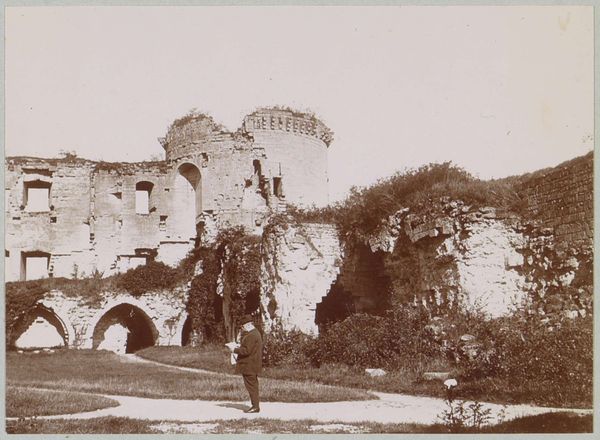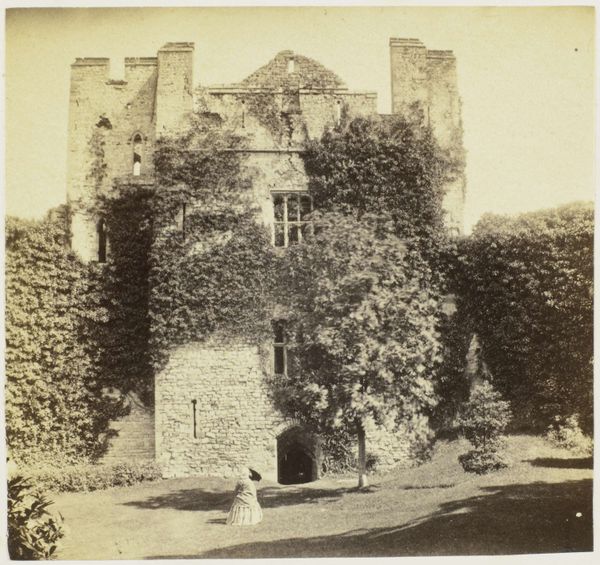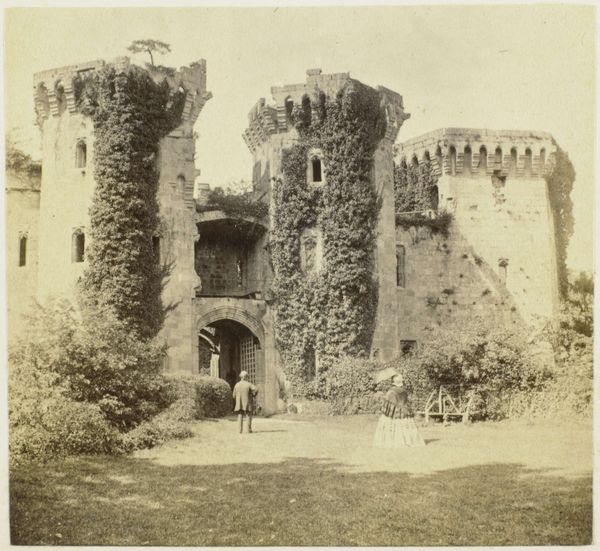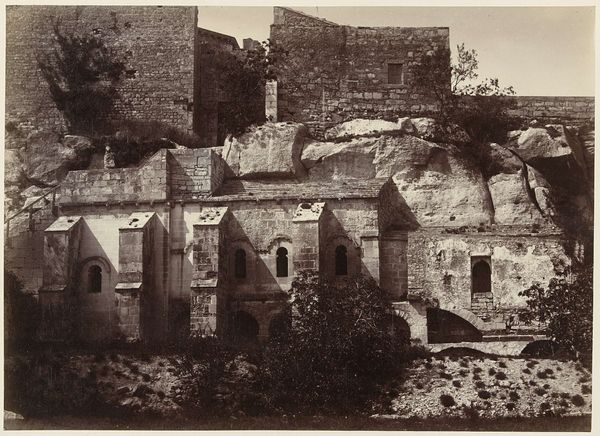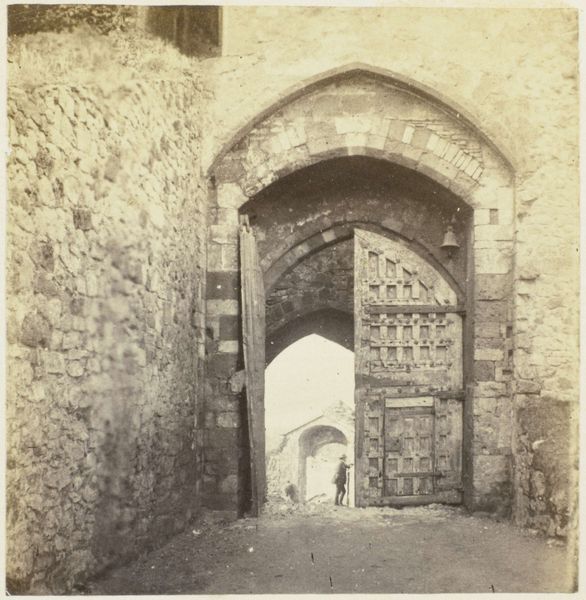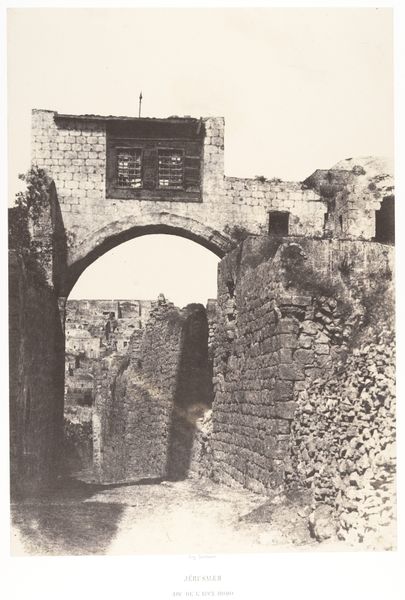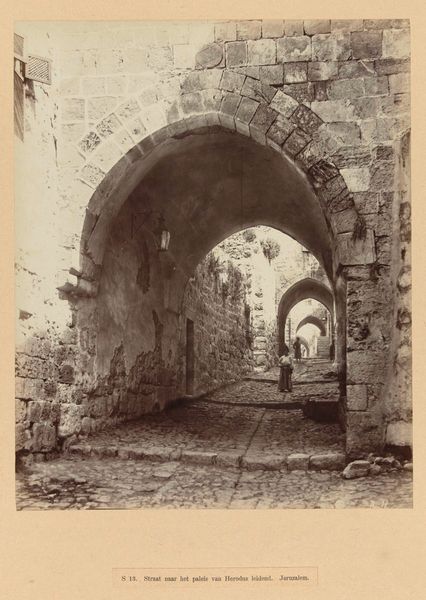
#
photo of handprinted image
#
light pencil work
#
photo restoration
#
pencil sketch
#
colourisation
#
house
#
charcoal drawing
#
coloured pencil
#
ink colored
#
watercolour illustration
#
watercolor
Dimensions: height 73 mm, width 76 mm
Copyright: Rijks Museum: Open Domain
Curator: This photographic print, entitled "Gezicht op Carisbrooke Castle," comes to us from before 1862, attributed to McLean & Melhuish. Editor: What strikes me immediately is its subdued tonality, almost sepia-like, lending it a palpable sense of history and decay. The composition leads the eye directly to that imposing arched gateway, and the architectural lines against the vegetation is remarkable. Curator: Precisely. The choice of photography, a relatively new medium at the time, allows for a level of detail previously unattainable in artistic renderings of architecture. This detail wasn’t just aesthetic. Photography at this time often documented industrial progress, land usage, or imperial conquests and could have functioned in similar ways here to reinforce British dominance and property rights through the relatively simple manufacturing of multiple images. Editor: I see what you mean. The materiality of the photographic print itself becomes a document. But focusing on its formal aspects, the light plays so beautifully on the rough texture of the stone, emphasizing the castle's enduring presence despite the passage of time. The depth created by the receding planes – the bridge, the gate, the castle ruins beyond – adds a layer of visual complexity that invites prolonged contemplation. Curator: Right. But consider the labor and resources needed to produce and distribute these prints. Was the purpose documentary or aimed towards a more general consumer? The perspective emphasizes that even an imposing structure of historical weight like Carisbrooke was, is embedded in networks of consumption, colonialism and capitalist values. Editor: Even within that commercial context, one cannot ignore the image’s artistic intent. The photographer’s meticulous attention to composition, the interplay of light and shadow, the emotional depth evoked. To interpret through semiotics is to view this as an almost elegiac vision of a structure's inevitable decay. Curator: Certainly, there’s artistic value. But understanding photography in this period means engaging with the economics of its creation, distribution and social context as its role of documenting colonial life. Editor: A balance of perspectives, I believe, ultimately deepens our engagement with the image. Curator: Agreed. The formal analysis underscores its artistic intent and social value, illuminating its purpose, as well as considering how cultural capital and imperial might shapes our interpretations of art.
Comments
No comments
Be the first to comment and join the conversation on the ultimate creative platform.
